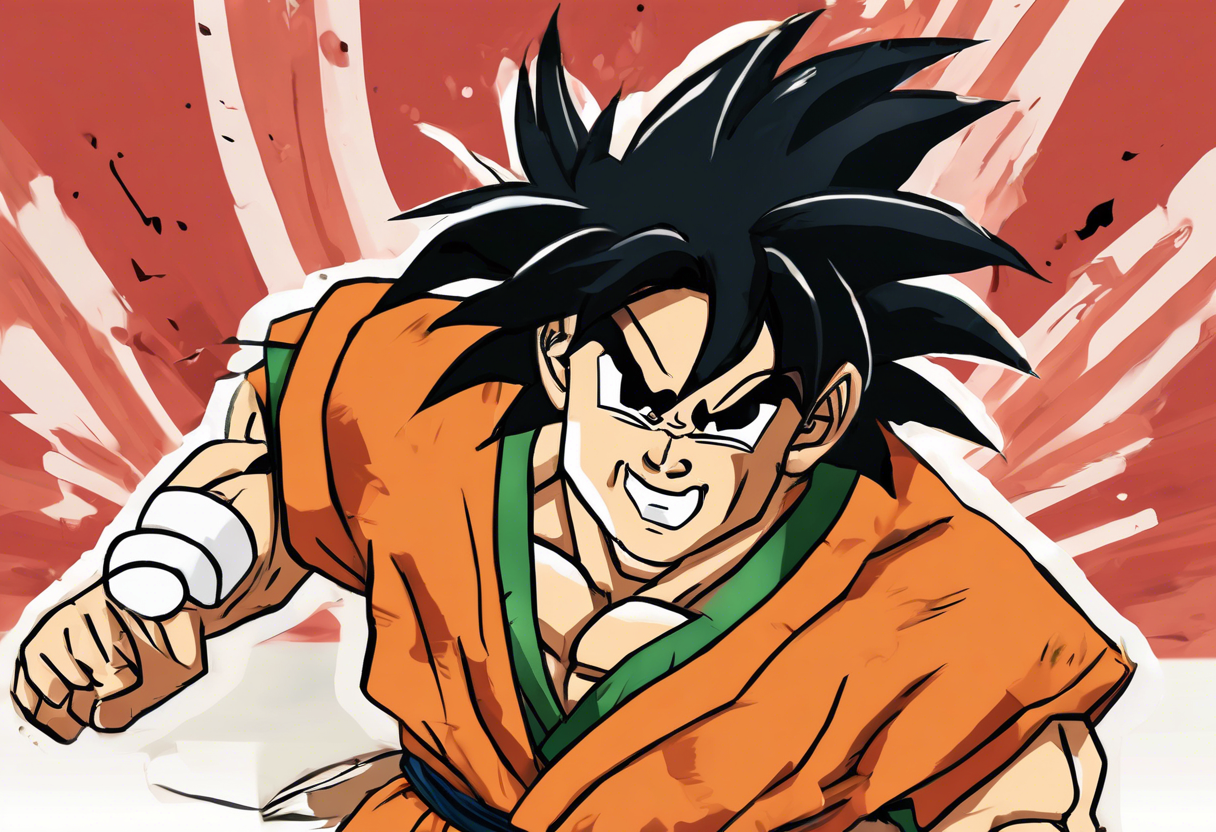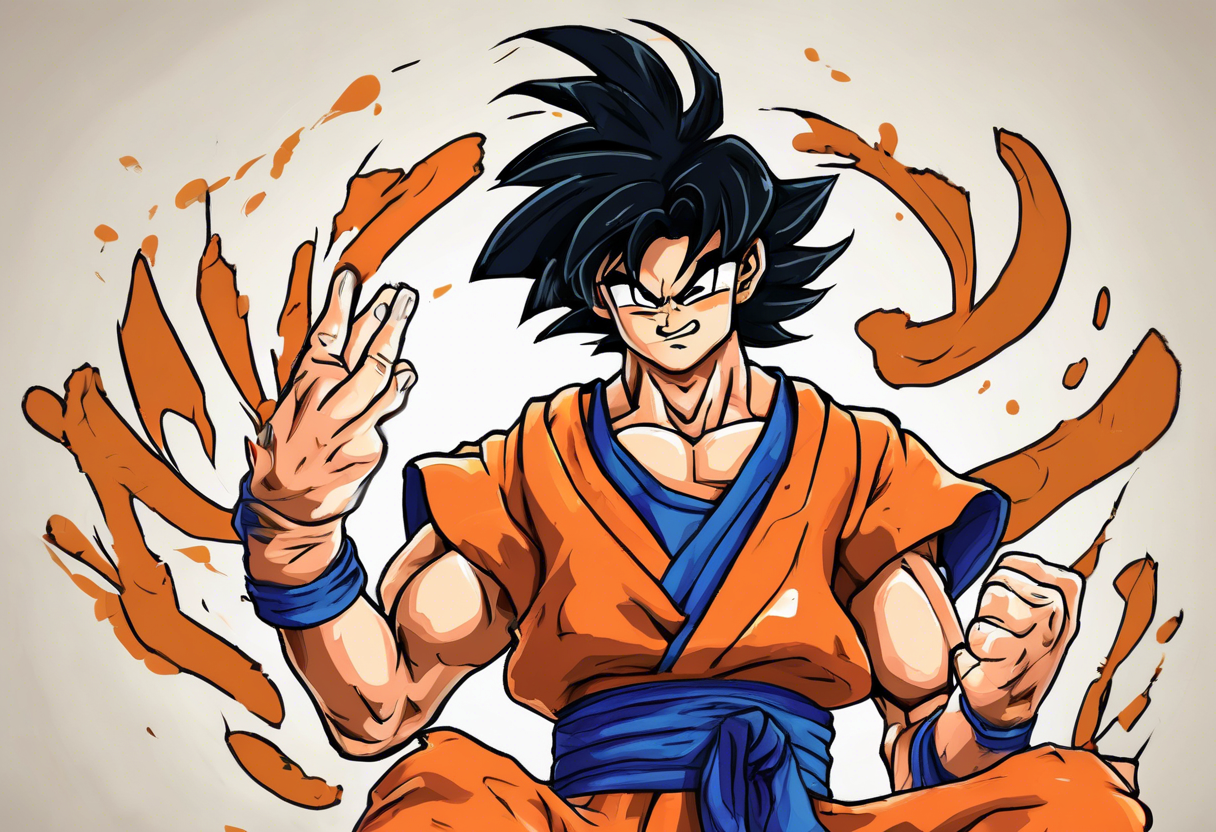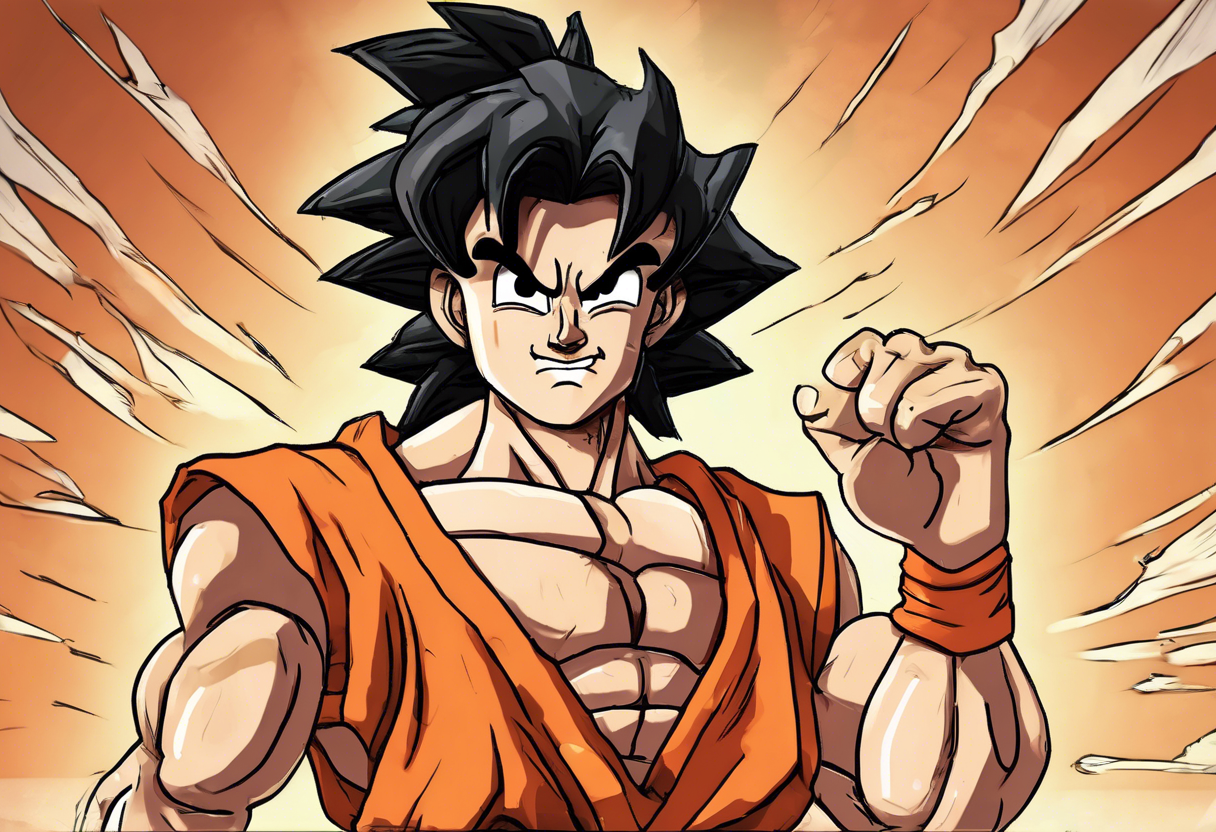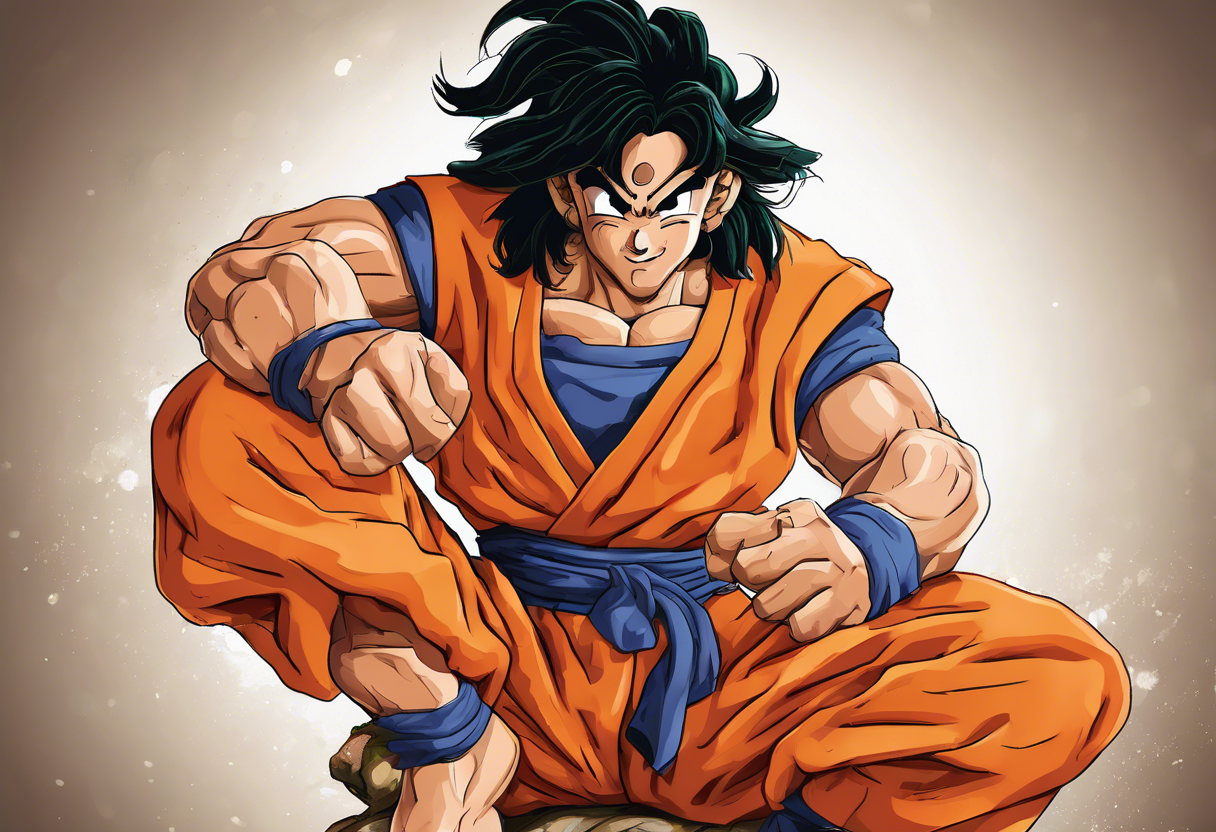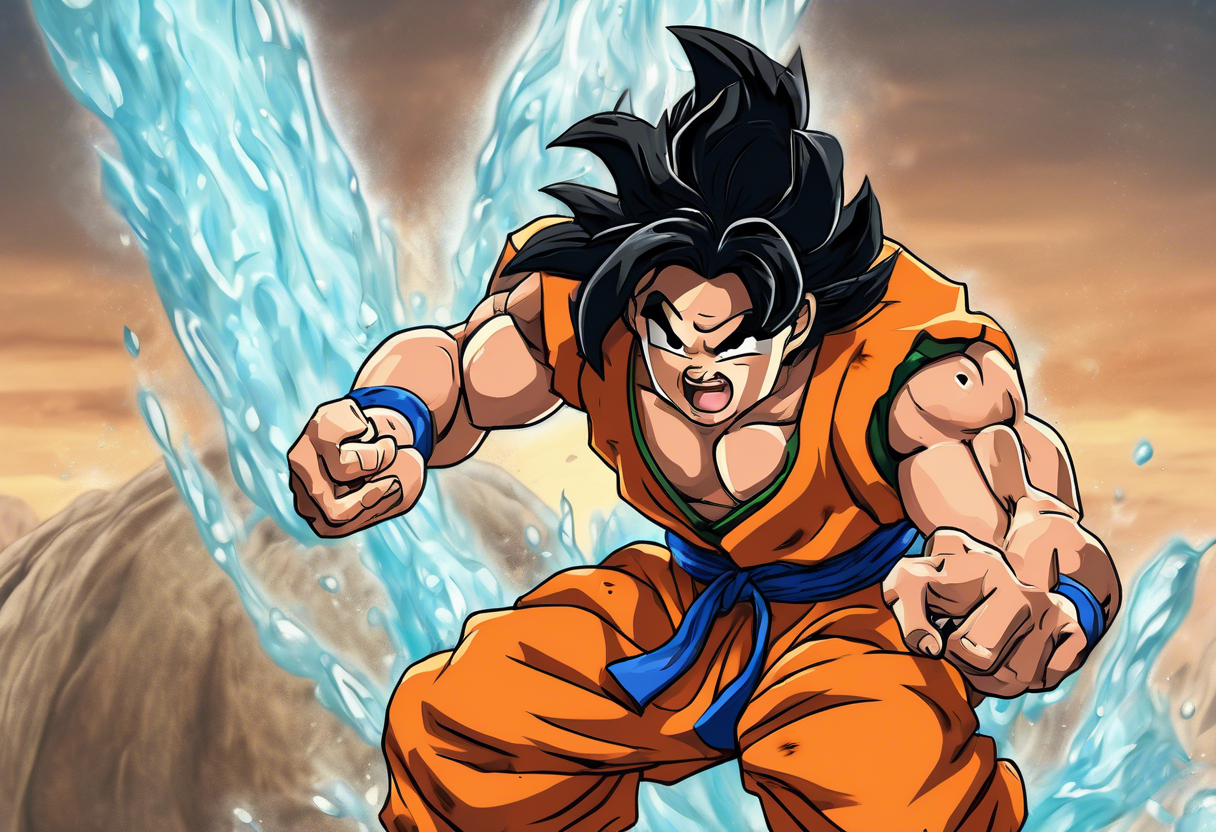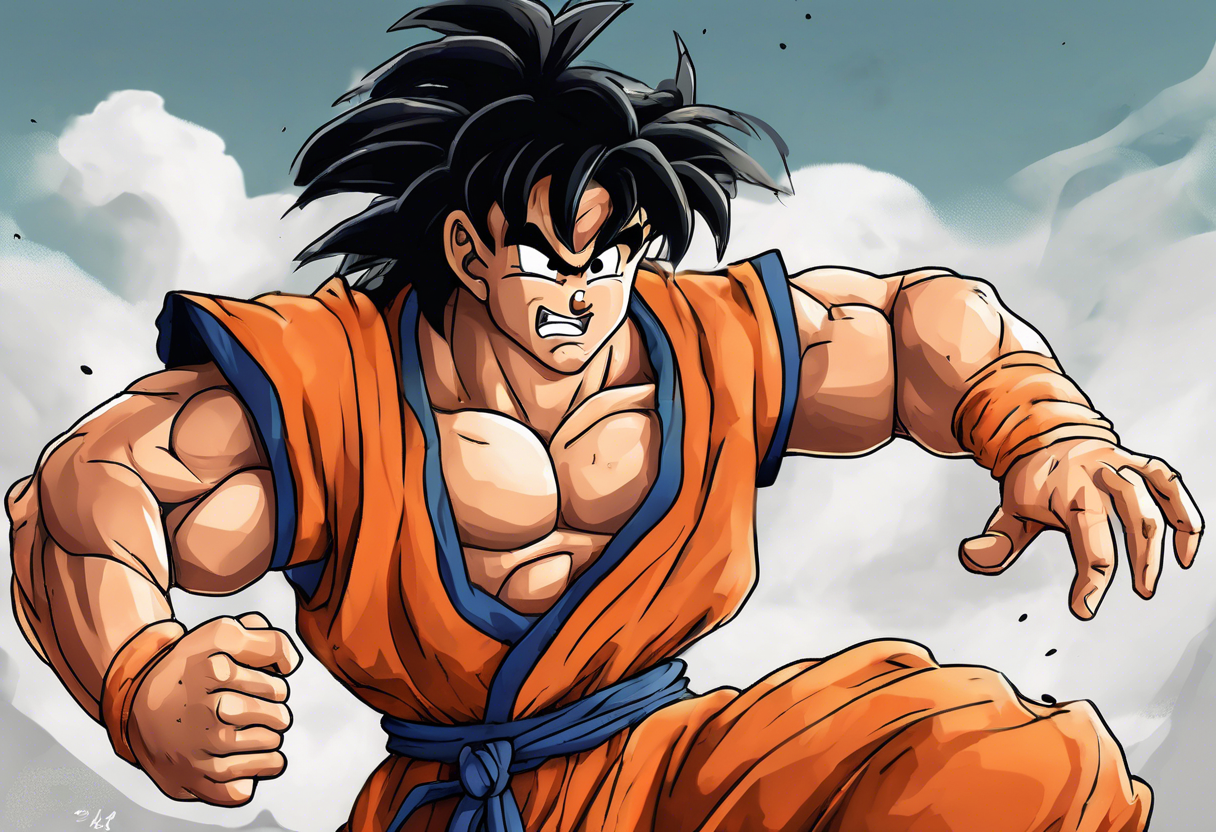Contents
Yamcha: The Complex and Enduring Character of the Dragon Ball Series
Introduction
Yamcha, created by the renowned manga artist Akira Toriyama, is one of the oldest and most intriguing protagonists in the Dragon Ball series. First introduced in chapter #7 of the Dragon Ball manga, titled "Yamcha and Pu’ar," published in Weekly Shōnen Jump on September 11, 1984, Yamcha initially appears as a desert bandit and an antagonist to Son Goku [1][5].
Yamcha’s backstory reveals him as a member of a nomadic group of bandits, living off the grid with his constant companion Pu’ar [2]. This early life shapes his skills as a martial artist, particularly in the Wolf Fang Fist style, which becomes his signature technique.
As a character, Yamcha is defined by his complex personality, which includes an initial gynophobia (fear of women) that fluctuates throughout the series, and his eventual transformation from an antagonist to a loyal ally of Goku [1][5]. His role in the narrative is multifaceted, contributing significantly to the development of the story and the characters around him.
Role in the Story
Yamcha’s journey in the Dragon Ball series is marked by several key events and transformations. Initially, he and Pu’ar attempt to steal Goku and Bulma’s Dragon Balls, setting up an early conflict with Goku. However, after being defeated, Yamcha undergoes a significant character shift, becoming an ally to Goku and the rest of the group [1][5].
Yamcha’s storyline is deeply intertwined with his relationships with other characters. He starts a relationship with Bulma, one of the main female characters, and later becomes a pupil of Master Roshi, further honing his martial arts skills [5]. His training under Master Roshi allows him to learn powerful techniques such as the Kamehameha and the Sōkidan (Spinning Chi Bullet) [5].
One of the pivotal moments in Yamcha’s story is his training under Kami to prepare for the Saiyan invasion. Unfortunately, he is killed by one of the Saibamen during this period. However, he is later wished back to life by the Namekian Dragon Balls and continues to train under King Kai in the afterlife [5].
Despite his early promise as one of the strongest fighters in the original Dragon Ball series, Yamcha faces significant setbacks in Dragon Ball Z. He becomes increasingly irrelevant as the series progresses, experiencing perpetual defeats and losing his sense of purpose after Bulma breaks up with him and starts a family with Vegeta [4].
Character Analysis
Yamcha’s personality is a blend of confidence, vulnerability, and determination. Initially portrayed as a confident and feared desert bandit, he later reveals a more vulnerable side, particularly in his interactions with women due to his gynophobia [1][5].
His motivations are driven by a desire for strength and recognition. Yamcha’s early battles with Goku serve as a catalyst for his growth, as he seeks to surpass his rival and prove his own worth. However, as the series progresses, his inability to keep up with the escalating power levels of other characters leads to a crisis of identity and purpose [4].
Yamcha’s strengths lie in his martial arts skills and his initial bravery. His Wolf Fang Fist technique is formidable, nearly overwhelming Goku in their first encounter [4]. However, his flaws include his lack of adaptability to the rapidly changing power dynamics in the series and his emotional struggles, particularly with his relationships and self-worth.
The development of Yamcha’s character is complex and often tragic. From being one of the original series’ strongest fighters to becoming one of the earliest casualties in Dragon Ball Z, Yamcha’s arc is marked by decline and disillusionment. Despite this, his character remains compelling due to his relatable struggles and the depth of his emotional journey [4].
Themes and Symbolism
Yamcha embodies several themes that are central to the Dragon Ball series. One of the most significant is the theme of perseverance and the pursuit of strength. Despite facing numerous setbacks, Yamcha continues to strive for improvement, reflecting the series’ emphasis on hard work and determination.
Yamcha also symbolizes the human condition within a world dominated by superhuman abilities. His struggles to keep up with the increasingly powerful characters around him serve as a reminder of the limitations and vulnerabilities of human characters in a fantastical world [4].
Additionally, Yamcha’s character touches on the theme of identity and purpose. His transition from a confident bandit to a less active member of the Dragon Team highlights the challenges of finding one’s place in a rapidly changing environment and the importance of adapting to new circumstances.
Cultural Impact
Yamcha has had a significant cultural impact since his introduction. He is one of the most recognizable characters in the Dragon Ball series, and his early battles with Goku are iconic moments in anime history.
In adaptations and spin-offs, Yamcha has been portrayed in various ways. For example, in the live-action film Dragonball Evolution, he was played by Joon Park, offering a different interpretation of the character [1].
Yamcha’s influence on popular culture extends beyond the Dragon Ball series. He has inspired numerous fan art, cosplay, and fan fiction, reflecting his enduring appeal to fans. His character archetype—the underdog who strives for greatness despite overwhelming odds—has also influenced other works in the anime and manga genres.
Critical Reception
Yamcha has received mixed reviews from critics and audiences. On one hand, he is praised for his early role as a strong and challenging opponent for Goku, and his character development is appreciated for its complexity and relatability [4].
On the other hand, Yamcha has been criticized for his decline in relevance and power as the series progresses. His inability to keep up with other characters has led some to view him as weak or irrelevant, which has been a point of contention among fans [4].
Despite these criticisms, Yamcha remains a beloved character, and his tragic arc has sparked significant discussion and analysis. His character serves as a reminder of the challenges faced by human characters in a world of superhuman abilities and the emotional depth that can be explored in such narratives.
Legacy
Yamcha’s legacy in the Dragon Ball series is profound. Despite his decline in prominence, he remains an integral part of the narrative, contributing to key moments and character developments throughout the series.
His enduring appeal lies in his relatable struggles and the depth of his emotional journey. Yamcha’s character has inspired other works and character archetypes, and his influence can be seen in various aspects of popular culture.
In contemporary discussions, Yamcha’s character arc is often cited as an example of how characters can evolve and decline within a long-running series. His story serves as a reminder of the importance of character development and the emotional resonance that can be achieved through complex and nuanced storytelling.

